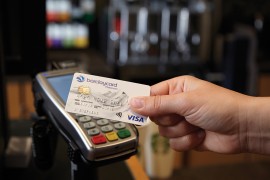Consumer payments: the contactless landscape
Nick Kerigan, managing director of future payments at Barclaycard, lends his expert view on the changing consumer payment landscape and maps the journey to contactless card payments and beyond. Kerigan leads the team that looks at payment and competitor intelligence, and is responsible for driving innovation across Barclaycard.
Last year was a milestone in UK payments: the volume of electronic payments overtook cash for the first time. Together, consumers, businesses and financial organisations made £19.8 billion non-cash payments in 2014 – this figure was £1.3 billion higher than the value for cash; proving that cards and automated payments have truly come of age. This trend has been evident for some time.
Over the last 20 years, there has been a gradual move towards electronic payments; as customers prefer the convenience of cards, like the security they afford and know they are the speediest way to pay. Merchants appreciate that taking card payments improves cash flow, boosts sales and ensures trust.
According to the UK Cards Association, by 2024 the number of card payments made in the UK is expected to increase by 66% to reach £19.2 billion.
We’ve clearly passed the tipping point.
Contactless takes centre stage
I have witnessed first-hand how Britons have effortlessly adopted contactless technology in recent years. Contactless is showing exponential growth with year on year contactless spend growth up almost 200%.
In the first half of 2015 alone, £2.5 billion was spent using contactless cards according to the UK Cards Association. Remarkably, this figure is higher than the transaction volume in all of 2014 (£2.3 billion).
This transformation is mirrored on the Transport for London (TfL) network. TfL saw an opportunity to instil a cutting-edge technology when it was evaluating the future of ticketing so we were able to work with them, as their acquiring partner, to drive the initiative forward. After extensive industry efforts, contactless was launched across the TfL network in September 2014. Since its inception, there have been over 194 million journeys and on a single day in October 2015, over one million journeys were made.
There are other factors that are contributing to this recent seismic shift; the contactless limit increased from £20 to £30 in September 2015 so now contactless is netting so much more of Britain’s everyday spend. From little and often grocery shops, fuel filling, daily commuting and trips out to the cinema – the vast majority of everyday payments can now be made using a contactless device.
But, like all innovations, it has taken some time to gain traction.
Tech talking
Technological developments come well before mainstream adoption. Innovations can’t just be trendy technology, in payments they need to deliver a win-win-win: a win for the consumer, a win for the merchant and a win for the payments provider.
Consumers want ease, convenience and speed. So, nowadays, they can pay on-the-go with the tap of a card or a wave of the wrist.
Merchants need efficiency, better economics and assurance they can make the sale with the technology provided.
The payments provider values a sound, sustainable business model – which the payment technology has to support…
This is an excerpt. The full article is available in the April 2016 edition of Banking Technology. Click here to read the magazine online.
To get your free printed copy, please register here.












































